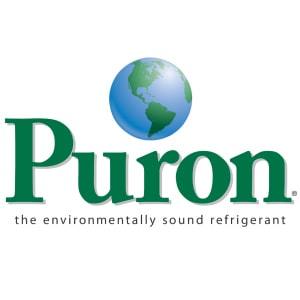Winter energy bills are often a shock to the system. After a comfortable summer and a cozy fall, the extreme temperature drop that most experience during the winter months can make utility bills skyrocket. Some homeowners may not realize that there are certain steps they can take to make their home more energy efficient during the cold months. Some of these steps require an appointment with your HVAC contractor, while others require just a trip to the hardware store or even just some simple forethought.
Ways You’re Not Being Energy Efficient in Winter, and What to Do About It

Not Sealing Leaks Around the Home
According to the U.S. Department of Energy, simple leaks decrease a home’s energy efficiency by 5 to 30 percent per year. Using caulking or weatherstripping to seal up gaps can greatly improve your energy usage. Both methods are relatively easy and are among the best ways to contain heat inside the home. Even a small crack can cause considerable heat loss.
Windows and Outer Walls
Check for leaks in corners, around the chimney and along the foundation. Also check anywhere wires and pipes exit. You can use incense to test each area by moving the lit incense along the walls, being careful of drapes or flammables. If the smoke waivers, outside air is sneaking in and hot or cool air is escaping. You can also have someone blow a hair dryer around the windows from the outside. If your lit candle from the inside flickers or goes out, you’ll also want to caulk or weatherstrip this area.
The Attic
Warm air can also escape through your attic hatch when it isn’t properly sealed. You can use weatherstripping to prevent airflow both at the hatch and at the access doors. It can also be a wise idea to attach insulation to the side of the door that is inside the attic. Of course, if your attic is a living space, you’ll want to treat your attic door just like your front door and follow the tips below.
The Doors
Additionally, check and replace worn out door seals. If the weathterstripping has worn out, install new weatherstripping with small nails or staples, you also have the option of choosing a double-sided tape weatherstipping. Lastly, make sure your garage door doesn’t have a gap at the bottom. If the garage door doesn’t close level and flat along the floor, use a flexible garage door weatherstrip to create an airtight seal across the floor. Insulating the garage door can also be a wise idea, as it prevents hot and cold air from entering or escaping.
Not Taking Advantage of Simple Tricks

Seal Doors with Fabric
If you feel a draft under your front door, you can make what’s called a “draft snake.” Roll a bath towel and place it under the drafty door, or make a snake out of scraps of fabric. You can even make the draft snake decorative by adding eyes or a tongue, etc. Fill your draft snake with kitty litter or sand to help it stay in place.
Man the Thermostat
Another easy step is to turn down your thermostat at night. A good energy-saving range is between 58 and 62 degrees. Invest in heavy blankets or thick pajamas, or purchase a small room heater or an electric mattress pad. The heat you’ll save during these hours will perhaps lower your energy bill more significantly than anything else.
Unplug Appliances
A great way for the whole family to participate in energy efficiency is to unplug appliances when leaving for vacation. Even if you’re just gone for a weekend, unplugging everything (besides a refrigerator with food, of course!) ensures that these appliances aren’t staying on standby, which costs money. You can even make a game out of it by asking your children how many things they can find to unplug. For quick energy savings, use an external circuit breaker cord. By switching off the circuit breaker, you can turn off all plugged-in items at once.
Dress Warm
Putting on layers may seem obvious, but it’s something that people can often forget. Wearing thermal underwear, a comfy robe or sweater, or warm socks can go a long way toward warming you up from the inside. You can also wear a comfortable beanie or hoodie, or long-sleeve shirts and sweatpants. You can even wear more than one shirt. Of course, if you’re bundled up and still cold, you’ll want to take other measures as well.
Smart Shaving
Turning off the water while you shave can help your heating bill, as the hot water you use during this time is wasted. Instead, fill the sink with just enough water to rinse the razor in between swipes. Turn off the water while you brush your teeth as well. You can even shut it off while you lather up in the shower, and then turn it back on just to rinse off.
Not Making Your HVAC System Energy Efficient

Get a Tune-Up
One of the best ways to ensure the energy efficiency of your HVAC system is to get scheduled maintenance performed. Ideally, you’ll want to have your HVAC system tuned up once a year. This tune-up will include replacing filters, cleaning out dust and debris and checking for any malfunctioning parts. With proper maintenance, HVAC systems can work properly for about 12 to 15 years.
Get Your Ducts Sealed
An average system loses about 10 to 30 percent of heated air through the ductwork. You might want to hire a professional to test the duct system and perform any required maintenance. When ducts are properly sealed, you can save up to $140 a year, and your ducts will also have less of a chance of housing mold and dust. However, make sure to steer clear of “duct cleaning” services, as opposed to duct improvement, as the former are often scams.
Get an Efficient Furnace
Furnaces that are over about 15 years old often need to be replaced. Additionally, consider switching to an energy efficient furnace if you don’t have one already. An Energy Star-certified furnace can save you about 15 to 20 percent compared to other types of new furnaces, and they can save you up to 50 percent compared to an older furnace.
Winterize the AC Water Lines
Drain the hoses and pipes attached to the air conditioner. Check to make sure excess water isn’t pooled in the equipment, and wrap the lines with a towel or blanket. Turn off the air conditioner’s water shutoff valve if it has one. You can also make sure hoses are drained and neatly stowed away. Seal any water leaks, and remove any air conditioning units from the windows to prevent cold drafts from coming in during the winter. If you can’t remove your window unit, seal any leaks you find.
Replace the Furnace Filter
Replacing the furnace filters every month during winter is important for energy efficiency, as dirty filters can restrict airflow. Marking it on your calendar can be a great way to remember, as many homeowners often forget this important measure. You can also switch to a permanent filter, which reduces waste and the hassle of remembering to change it. Disposable filters only trap 10 to 40 percent of debris, but electrostatic filters trap about 88 percent. They are also better at controlling bacteria, pollen and viruses. You may also decide to purchase a genuine HEPA filter, which removes about 99.97 percent of airborne particles.
These are just a few of the ways you can save money this winter and enjoy a lower energy bill. Whether you prefer do-it-yourself tasks, large-scale projects or just simple solutions, these tricks can increase your energy efficiency. By taking measures to ensure that your HVAC system is up-to-par, you can keep your hard earned money in your pocket while remaining warm this winter.
“Follow” us for additional information on heating, cooling and more.






